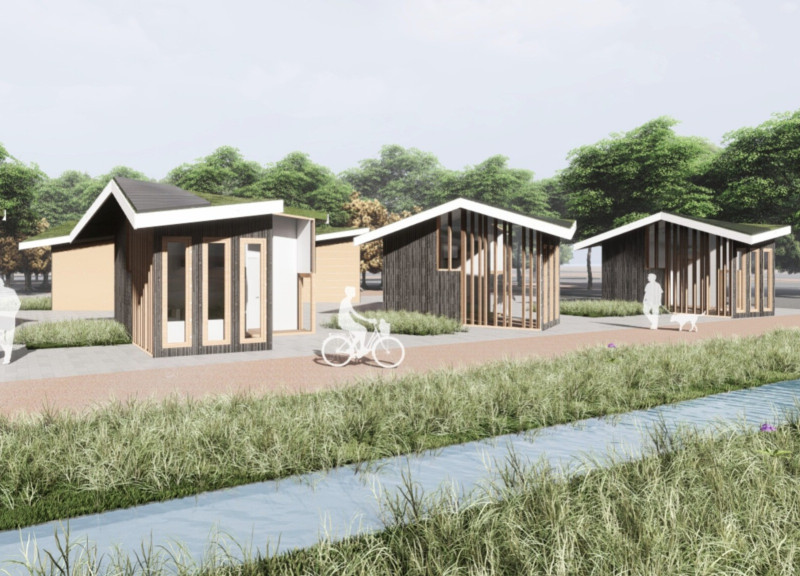5 key facts about this project
At its core, this project functions as a multi-purpose facility, serving [insert specific functions, such as community spaces, educational facilities, or commercial areas]. The layout has been meticulously planned to facilitate both privacy and social interaction. Public areas are enhanced to encourage community engagement, creating inviting spaces for gatherings, events, or everyday activities. Meanwhile, more private zones are thoughtfully distanced to ensure tranquility and efficiency, catering to varying user needs with a versatile design approach.
Central to the architectural expression is the materiality that has been employed throughout the building. The integration of concrete provides a robust foundation, reflecting durability and permanence. Glass is used extensively within the façade, offering transparency and allowing natural light to flood into the interior spaces. This use of glass not only fosters a connection with the outdoors but also contributes to energy efficiency, enhancing the overall sustainability of the project. Wood elements introduce warmth and texture, creating an inviting atmosphere that balances the more austere qualities of concrete and glass. Steel components add structural integrity, allowing for expansive, open spaces that support dynamic uses without compromising on safety or stability.
The architectural design considers the local climate and natural environment, resulting in a structure that not only meets functional requirements but also adapts to its surroundings. The building features [specific architectural elements such as overhangs, terraces, or green roofs], which work together to mitigate environmental impact while enhancing the user experience. These elements do not merely serve aesthetic purposes; they are integral to managing heat, light, and rainwater, showcasing a commitment to sustainable architectural practices.
What makes this project particularly noteworthy are the unique design approaches that set it apart from traditional architectural solutions. A significant aspect of its design is the emphasis on flexibility and adaptability. Spaces are arranged to allow for various configurations, accommodating changes in use over time without necessitating major renovations. This adaptability is bolstered by movable partitions and multifunctional areas that can easily transform based on user needs.
Engaging deeply with the cultural context, the project also draws from local architectural vernacular. By incorporating [specific regional architectural features or styles], it resonates with the community identity and reinforces a sense of place. This dialogue with the surrounding environment is not merely aesthetic; it helps foster community pride and enhances the overall social fabric.
In terms of architectural details, careful attention has been paid to elements such as window placement, door sizing, and the rhythm of façade elements, which collectively contribute to the visual narrative of the building. These details serve both functional and aesthetic purposes, achieving a coherent architectural language that speaks to both the building's role and its integration within its locale.
For those interested in delving deeper into this project’s intricacies, exploring the accompanying architectural plans, sections, and designs will provide further insight into the well-considered architectural ideas that have shaped this facility. These resources highlight the extensive thought behind every aspect of the project, showcasing the balance of aesthetics, functionality, and community engagement. As you explore the presentation of this architectural project, you will gain a more nuanced understanding of how design can serve as both an art form and a response to real-world needs, illuminating the path for future architectural endeavors.


























